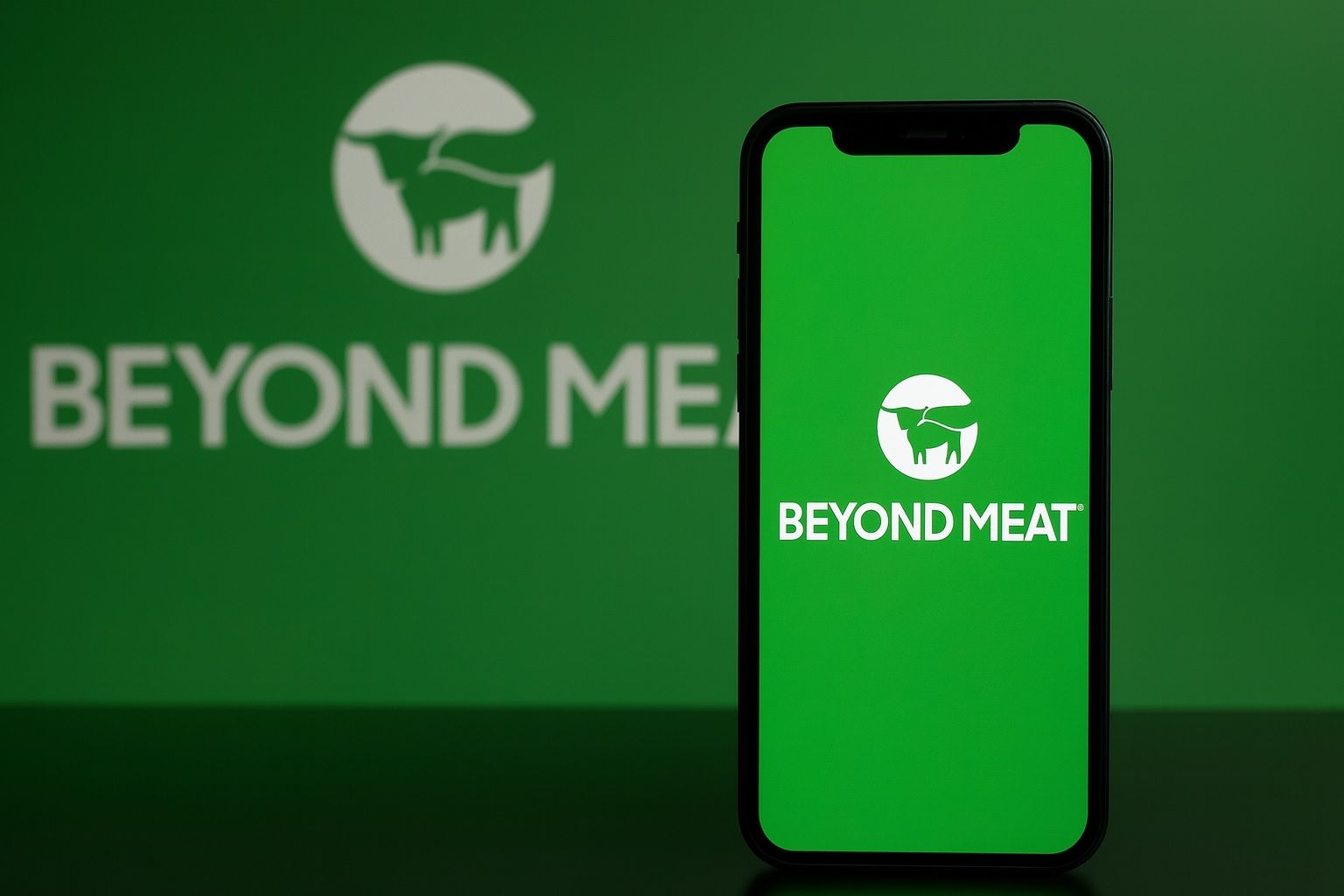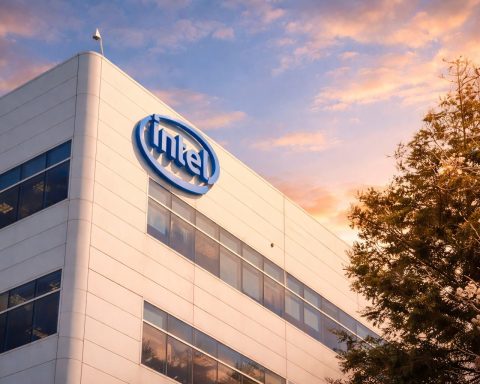- Stock Plunge: Beyond Meat (NASDAQ: BYND) shares imploded this week, plunging roughly 60% in one day and trading under $1 for the first time ever [1]. The stock closed around $0.65 on Oct. 17 – down about 97% from its 2019 peak [2]. (For context, BYND traded near $2.80 as recently as mid-September.)
- Debt-for-Equity Swap: The collapse was triggered by a controversial debt exchange offer. Creditors agreed to swap nearly $1.15 billion of convertible notes (due 2027) for new paper and equity [3]. Beyond Meat issued about $208.7 million in new 7% notes (due 2030) and ~316 million new shares to bondholders [4]. This swap slashed the debt load but quadrupled the share count, diluting existing shareholders. One analyst warned it’s a “huge dilution bomb” that flooded the market [5] [6].
- Lock-Up Expiry: The newly issued shares were locked up until Oct. 16. When that restriction lifted, roughly 62–63 million of the new shares (about 37% of issuance) began trading on Oct. 17 [7] [8]. Investors had feared this supply glut would drive the stock lower – and indeed BYND drifted in the mid-$0.50s on Oct. 16 and then spiked +24.6% to $0.65 on Oct. 17 as some short-covering occurred [9] [10]. Despite Friday’s bounce, the stock remains in penny-stock territory.
- Corporate Shake-Up: In the wake of the crisis, CEO Ethan Brown stepped down from Beyond Meat’s board (though he remains CEO) and at least two other directors resigned [11]. New board members – including a representative of bondholders – were appointed. The governance overhaul underscores the severity of the situation.
- Analyst Consensus: Wall Street analysts have turned uniformly bearish. BYND now carries an average “Strong Sell” rating, with a median 12-month price target of just ~$3 [12]. (By comparison, BYND traded over $235 in 2019.) Major firms have slashed targets: e.g., TD Cowen’s Robert Moskow cut his BYND target to $0.80 (from $2.00) [13], and Argus downgraded the stock to “Sell.” MarketBeat notes an average target of only about $2.27 [14]. Analysts describe Beyond Meat’s outlook in stark terms – some call it a “death spiral” of falling sales and heavy debt [15] [16], and TD Cowen warned of an “existential threat” if the company cannot stabilize revenue [17].
- Fundamentals Under Pressure: Beyond Meat’s financials have deteriorated. Q2 2025 sales were only ~$75.0 million (down ~20% year-over-year) with a net loss of $33.2 million [18]. The company has burned nearly $931 million in operating losses since 2021 [19]. At the end of Q2 it had only about $117 million in cash against ~$1.2–1.3 billion of debt [20]. (Moody’s warns the debt burden is very high.) Beyond Meat even withdrew its annual guidance after missing targets earlier in 2025. In short, revenue and cash are collapsing while losses mount [21] [22].
- Industry Headwinds: Beyond Meat’s troubles mirror a broader slump in plant-based foods. A recent Good Food Institute report found U.S. meat-alternative industry revenue fell 18% over two years (unit sales down 28%) as many consumers shift back to animal proteins [23]. Competitors are intensifying pressure: Tyson Foods, Nestlé and others are expanding their alt-protein lines, and privately-held Impossible Foods has gained shelf and restaurant traction (e.g. at Burger King) [24]. Critics note that “Americans still overwhelmingly prefer the real thing,” and pricier alt-meat has struggled amid tight consumer budgets [25]. In 2021 Beyond Meat peaked at $465 million in revenue – last year it was only $326 million, and the company never turned a profit [26] [27].
Beyond Meat’s collapse stands in sharp contrast to the broader market, which has been strong in 2025 (S&P 500 up ~14% YTD) [28]. Instead of enjoying a 21st-century tech breakout, BYND is now one of the most-shorted stocks (short interest ~64% of float [29]) and a cautionary tale of peak hype turning to panic.
Debt Restructuring Drowns Stock
On Oct. 13, Beyond Meat announced that nearly all ($1.15 billion) of its 2027 convertible notes would be swapped into new debt and equity [30] [31]. Under the deal, bondholders surrendered their convertible bonds in exchange for roughly $208.7 million of new convertible notes (7%, due 2030) and about 316 million new shares of BYND stock [32] [33]. Before the swap, only ~76.7 million shares were outstanding. Issuing 316 million new shares effectively more than quadruples the share count, massively diluting existing investors [34] [35]. As one analyst put it, this is a “huge dilution bomb” for shareholders [36] [37].
Investors immediately panicked. On Oct. 13 (Monday), the stock opened around $0.84 – about 60% down from the prior week – as the news sank in [38]. Over the next days BYND plunged to new lows (briefly around $0.50–$0.60) as traders fretted over the impending flood of shares [39]. By Friday, Oct. 17, BYND closed roughly $0.65 [40], a 24% pop on the day after initial selling, but still at record-low levels [41]. (Trading volume has been enormous – hundreds of millions of shares a day – overwhelming the market’s thin float.)
The rationale for the debt-for-equity swap was to buy time and avoid default. The deal shaves about $900 million off Beyond Meat’s near-term debt by pushing maturities to 2030 [42]. “This marks a meaningful next step towards our goal of reducing leverage and extending debt maturity,” CEO Ethan Brown said in the company’s press release [43]. In effect, creditors have bailed out the company, taking stock and new notes at a steep haircut, while stockholders got diluted. As one market observer noted, “We remain concerned about sales trajectory owing to persistent category headwinds,” echoing fears that even with the debt relief, revenue keeps sliding [44].
Caution and Commentary from Experts
Analysts and executives have been openly alarmed by the stock’s fall. Beyond Meat’s founder and CEO Ethan Brown has publicly acknowledged the challenges: he warned in August that current consumer trends are swinging back to animal meats, “having a moment that currently leaves less room for our products and brand,” leaving Beyond Meat “on the other side of [that] moment” [45]. Yet Brown still sought to project confidence – telling investors the company remains “truly excited about our future” [46]. He has directed management to cut costs aggressively and targets breaking even (EBITDA positive) by 2026 [47].
On Wall Street, forecasters have become uniformly bearish. TD Cowen recently reiterated a “Sell” rating on BYND, and analyst Robert Moskow slashed his price target to just $0.80 [48]. Argus Research and others have also downgraded the stock. As MarketBeat summarized, “multiple brokerages have recently downgraded Beyond Meat’s stock ratings, with price targets falling as low as $0.80 and an average rating of ‘Strong Sell’.” The average consensus target is now in the low single digits [49] [50].
Indeed, analysts worry that Beyond Meat is in a “death spiral” of declining sales and heavy leverage [51]. TD Cowen specifically warned of an “existential threat” if the company cannot stabilize revenue [52]. Short-term forecasts are dire: LSEG estimates suggest 2025 revenue will be about 14% lower than previously thought [53] [54]. The next major test is the Q3 earnings report (due Nov. 5, 2025), where analysts expect another sales drop [55]. One potential silver lining some point to is Beyond Meat’s deals (for example, it still has a pact to supply McDonald’s McPlant burgers), and hopes that new product formulations could rekindle interest [56]. But most currently view BYND as a speculative turnaround rather than a stable growth story [57].
On the technical side, Beyond Meat’s stock is trading at a tiny fraction of its historical highs. Its 52-week range was $0.50–$6.61 [58], and it now sits near the bottom. Notably, the company risks Nasdaq delisting if it remains under $1 for 30 consecutive days [59]. Meanwhile, short interest is sky-high (~64% of float [60]), meaning many investors are betting on further declines. A small rally on Friday was partly driven by short covering after the lock-up ended, but it’s unclear whether any positive momentum can hold.
Industry Context: Alt-Meat vs. Real Meat
The Beyond Meat saga comes amid a broader backlash in the plant-based meat market. In the Covid years, Beyond Meat was a darling – its 2019 IPO surged over 200%. But consumer enthusiasm has cooled. Grocery sales of meat alternatives are down nationwide. For example, Good Food Institute data show a 28% drop in unit sales and an 18% drop in revenue for U.S. plant-based meat over the past two years [61]. Many consumers cite taste concerns or sticker shock (plant-based burgers often cost more than ground beef).
Rival companies have stepped in: Tyson Foods, Nestlé and others are expanding plant-based lines, and Impossible Foods (though still private) continues to roll out new products and partnerships (e.g. with Burger King and other chains). As one industry analyst quipped, the market has become saturated – “like a frozen yogurt store effect,” where every big meat company and startup is chasing a limited customer base [62]. In this environment, critics note “Americans still overwhelmingly prefer the real thing,” and beyond the hype, plant-based brands must work harder to prove their value [63].
Outlook: Downward Bias Prevails
With no obvious catalyst for a turnaround, most observers remain bearish. Beyond Meat’s brand recognition and global footprint are still assets, but they’ve been largely eclipsed by the debt overhang and weak sales. If Beyond Meat can stabilize operations, renegotiate supply deals or innovate cheaper recipes, there might be a path back up. For now, however, Wall Street expects BYND to languish in the low single digits. The median 12-month price target is around $3 [64], barely above today’s levels. Some models (like CoinCodex) see it trading near $2 well into late 2025 [65].
Investors will watch this week’s developments closely. The expiring lock-up and the flood of new shares have already played out. Next up is the earnings report and any guidance revisions. Meanwhile, major indices are climbing higher, but Beyond Meat’s stock narrative is all about survival. As one veteran trader put it, BYND has become a “penny-stock cautionary tale” of how quickly a Wall Street darling can fall when fundamentals don’t pan out [66].
Sources: Market data and expert commentary from Reuters, Bloomberg, LA Times, AP/Houston Chronicle, MarketBeat and TS2.tech analysis [67] [68] [69] [70] [71] [72].
References
1. ts2.tech, 2. ts2.tech, 3. ts2.tech, 4. ts2.tech, 5. ts2.tech, 6. ts2.tech, 7. ts2.tech, 8. ts2.tech, 9. ts2.tech, 10. www.marketbeat.com, 11. ts2.tech, 12. ts2.tech, 13. www.marketbeat.com, 14. www.marketbeat.com, 15. ts2.tech, 16. ts2.tech, 17. ts2.tech, 18. ts2.tech, 19. ts2.tech, 20. ts2.tech, 21. ts2.tech, 22. ts2.tech, 23. ts2.tech, 24. ts2.tech, 25. ts2.tech, 26. www.latimes.com, 27. ts2.tech, 28. ts2.tech, 29. www.reuters.com, 30. ts2.tech, 31. www.reuters.com, 32. ts2.tech, 33. ts2.tech, 34. ts2.tech, 35. ts2.tech, 36. ts2.tech, 37. ts2.tech, 38. ts2.tech, 39. ts2.tech, 40. ts2.tech, 41. ts2.tech, 42. ts2.tech, 43. ts2.tech, 44. www.investing.com, 45. www.latimes.com, 46. ts2.tech, 47. ts2.tech, 48. www.marketbeat.com, 49. ts2.tech, 50. www.marketbeat.com, 51. ts2.tech, 52. ts2.tech, 53. ts2.tech, 54. www.reuters.com, 55. ts2.tech, 56. ts2.tech, 57. ts2.tech, 58. www.marketbeat.com, 59. www.houstonchronicle.com, 60. www.reuters.com, 61. ts2.tech, 62. www.investing.com, 63. ts2.tech, 64. ts2.tech, 65. ts2.tech, 66. ts2.tech, 67. ts2.tech, 68. www.reuters.com, 69. ts2.tech, 70. www.latimes.com, 71. www.investing.com, 72. www.marketbeat.com







